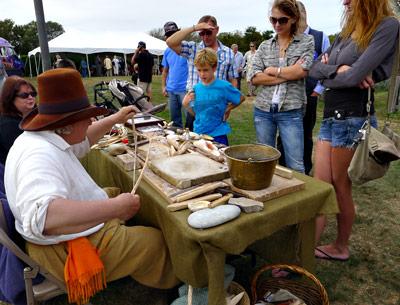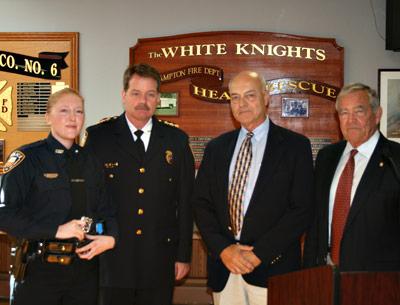It’s Fall Festival and Chowder Time
It’s Fall Festival and Chowder Time

The Montauk Chamber of Commerce will host its annual fall festival this weekend in the downtown area, with music, food, a 30-horse carousel, inflatable rides, crab races, pony rides, face painting, pumpkin decorating, raffles, and more, much more.
Saturday will bring the ever popular chowder-tasting contest, with over 30 local restaurants donating huge vats of Manhattan and New England blends. The winners will be chosen by popular vote and by a panel of professional foodies. Servings begin at about 11:30 a.m. but the lines start forming much earlier. Two tastings and a souvenir mug will cost $10.
Saturday evening will see a fireworks display by Grucci, set off from Umbrella Beach at 7 and visible from most of the downtown area and the beaches.
The fun continues Sunday with the Montauk Playhouse Community Center’s annual silent auction, from 11 a.m. to 3 p.m. under a tent on the green. A vast variety of prizes have been donated, including gift certificates from local restaurants, hair salons, motels, and gift shops, as well as electronics, jewelry, beach items and more. The winners’ names will be drawn out of jars and announced at the end of the event.
Later Sunday, at about 4:30, chamber officials will draw the winners in its cash catch raffle. Tickets, $50 each, will be for sale right up to the moment of the drawing. Cash prizes will be based on the number of tickets purchased; only 1,000 will be sold. If they all go, then the prizes will be $20,000 for first place, $5,000 for second, $2,500 for third, and five more prizes of $500 each.
With a bit of help from East End Getaway, the chamber will offer a shuttle bus through the hamlet all weekend, for rides from downtown to the Montauk Lighthouse, the harbor, the railroad station, and back downtown.
Also, the Hampton Jitney will pick up passengers for free at its stops from Southampton to Montauk. Prior reservations are necessary and can be made by calling 283-4600.
Updates and schedules are available on the chamber’s Facebook page and online at montaukchamber.com. The weather forecast is not promising; festival-goers might want to dress in warm clothes and bring rain gear.




